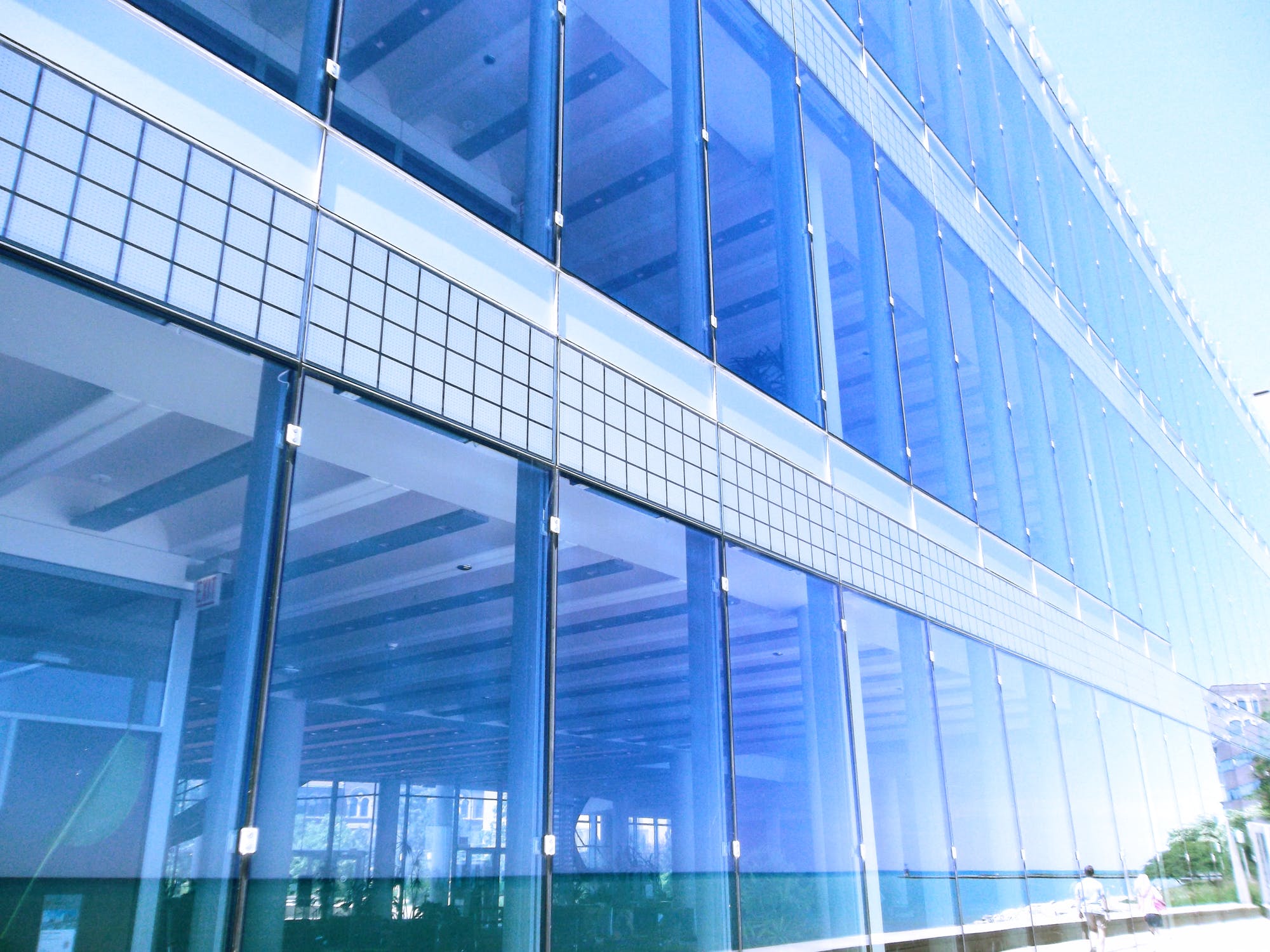What Is Safety Glass?
Safety glass is glass that is specifically designed to be less likely to break, and less prone to inflicting injury when it breaks. It also includes glass that is manufactured for strength or fire resistance.
Making Glass Stronger
Two types of safety glass are heat-strengthened and tempered. Heat-strengthened glass is cooled at a rate faster than regular annealed glass. Tempered glass, in turn, is cooled at a faster rate than heat-strengthened glass. Another way to strengthen glass is to use more than one pane of glass in the application.
Laminated glass consists of two or more panes of glass joined by a layer of plastic. Heat-strengthened glass is made by heating annealed glass uniformly, then cooling it at a slow rate. The rate of cooling directly affects the strength of glass. The regular process of cooling – or annealing – float glass results in a slow rate. Stronger glass can be produced by changing the rate of cooling. Heat-strengthened glass is about twice as strong as regular annealed glass of the same size and thickness, which makes it more resistant to wind loading and impacts. When it breaks, heat-strengthened glass fractures into large, jagged pieces similar to annealed glass. Heat-strengthened glass is generally used in high-rise buildings to help the glass resist thermal stress. Because heat-strengthened glass fractures into large jagged pieces, it does not qualify as a safety glazing material. All building codes require safety glazing for shower doors, commercial doors and storefronts for safety purposes.
What Is Tempered Glass?
Tempered glass is made by heating annealed glass uniformly. The annealed glass is then cooled rapidly by blowing air uniformly onto both surfaces at the same time. This is known as air quenching. Rapid cooling increases the compression forces on the surface and the tension forces inside the glass. Tempered glass can be from 1/8″ to 3/4″ thick. Tempered glass is about four times stronger than annealed glass of the same size and thickness. The only characteristic of the annealed glass affected by tempering is its bending or tensile strength. Tempering increases the tensile strength of glass. This makes tempered glass better able to resist the forces caused by heat, wind and impact. Tempering does not change:
- The color, chemical composition, or light transmission characteristics of the annealed glass
- Its compression strength (the ability of the glass to resist crushing forces)
- The rate at which the glass conducts and transmits heat
- The rate at which the glass expands when heated
- The stiffness of the glass
Benefits of Tempered Glass
Tempered glass offers greater strength against deflection and better wind resistance than heat-strengthened glass. Tempering increases the ability of glass to survive the impact of objects that may strike the building. When tempered glass does break, it shatters into small cubes, reducing the likelihood of serious injury on impact. Therefore, it qualifies as a safety glazing material. Tempering increases a lite’s edge strength, so it is specified when designers anticipate high thermal stresses. Many large storefront windows are tempered glass, which can be identified by a “bug,” a permanent label in the corner of the window. Tempered glass cannot be cut, drilled or edged.
What Is Wire Glass?
Wire glass is made by feeding a welded wire net of a particular design into the molten glass just before it enters the rollers. The wire does not add to the strength of the glass but it does hold the lite (a cut piece of glass) in the window sash if it shatters. Wire glass is used in fire-rated windows and doors because it meets most fire codes. For these applications, all the wires must be embedded in the glass. However, even though it meets fire codes, wired glass is not strengthened glass. In fact, it has only one half the strength of annealed glass of the same thickness. In addition, wired glass cannot be tempered.
What Is Laminated Glass?
Laminated glass, sometimes called “lami,” is made by placing a layer of polyvinyl butyral (PVB) between two or more glass lites. The PVB can be clear or tinted and commonly varies in thickness from .015″ to .090″, but it can be as thick as .120″ for special applications. The entire unit is then fused under heat and pressure in a special oven called an autoclave. The laminating process can be performed on clear, tinted, reflective, heat-strengthened or tempered glass.
Laminated glass is used in safety glazing applications. However, it has many other applications, such as burglar resistance, sound reduction, sloped glazing and space enclosures. Laminated glass is used as the inboard lite in skylights. By varying the thickness and color of the PVB, laminated glass can be used to reduce the transmission of solar energy, control glare, and screen out ultraviolet radiation, similar to reflective glass.
Benefits of Laminated Glass
When laminated glass breaks, the glass particles adhere to the PVB and do not fly or fall. Certain combinations of glass and PVB thicknesses qualify as safety glazing materials under the health and safety standards set by the American National Standards Institute (ANSI).
Bullet-Resistant Glass
Bullet-resistant glass is made of several layers of laminate and glass. In between the glass is a polycarbonate material that absorbs the energy of a bullet. The thicker the glass, the higher impact it can withstand. There is even one-way bulletproof glass that enables the victim to shoot back, but not to be struck.
